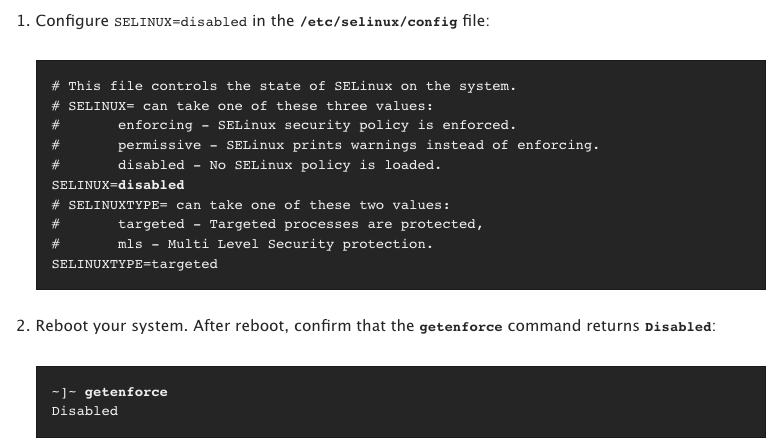...
If you're running CentOS or any other Red Hat-derived distribution, we recommend that you turn off SELinux. Permissive mode was tested and it worked well, just very nagging; the default mode is known to interfere with NMIS. Disabling SELinux is a lot easier than performing the extensive configuration that SELinux needs. To check if SELinux is disabled you can use the command getenforce. If SELinux is enabled, you can disable by following the commands below:
Similarly, if you have a firewall on your server (e.g. iptables) you need to make sure that it accepts incoming HTTP (possibly HTTPS) connections, and SNMP traps and Syslog connections/packets. This involves incoming connections to TCP ports 80 and 443, and UDP ports 161, 162 and 514.
...
